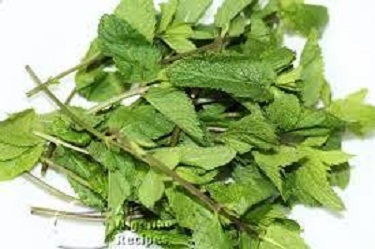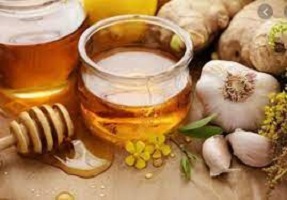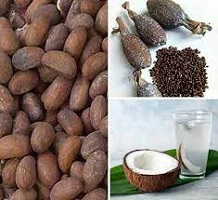Health Benefits of Scent Leaves, Uses, and Side effects
Health Benefits of Scent Leaves, Uses, and Side effects

- Scent leaf (Ocimum gratissimum): Benefits, What is the use of scent leaves?
- Amazing Things about Scent Leaf You Need To Know
- The medicinal values of scent leaf (Ocimum gratissimum)
An Overview of the Health Benefits of Scent Leaves
The Scent leaf is an aromatic herb that has spread widely over the world’s tropical and subtropical climates.
Nigeria, Ghana, Cameroon, Madagascar, Southern Asia, and the Bismarck Archipelago are all home to this species.
Polynesia, Hawaii, Brazil, Panama, the West Indies, and Mexico are among the countries where it has become naturalized.
Related Articles on the Health Benefits of Scent Leaves, Uses, and Side effects
- Scent Leaf and Ovulation: How to Prepare Scent Leaf Tea
- Fertility: Ovulation/Menstruation | Effects
- Benefits of Bathing with Scent Leaf & Bitter Leaf Water
- Scent Leaf for Weight Loss: Scent Leaf Seeds Benefits & Effects
- Scent Leaf for Fertility: How to Boost Fertility with Basil Leaf
The plant is a perennial homegrown shrub that can also be found in the wild and is mostly used as a spice for culinary delicacies due to its aromatic flavor.
It’s easy to dismiss this plant as nothing more than another sweet-smelling shrub, yet it’s much more than that.
The plant has antibacterial, antifungal, larvicidal, and antipyretic properties, making it useful in the treatment and prevention of infections and diseases
Scent Leaves include essential bioactive compounds like tannins, phenols, calcium, phosphate, iron, vitamin A, and others, all of which are necessary for human health.
Many Names of Scent Leaves
- Botanical Name: Ocimum gratissimum
- Preferred Common Name: African basil
- International Common Names
- English: clover basil; East Indian basil; shrubby basil; tree basil
- Spanish: albahaca Africana; albahaca cimarrona; albahaca de limón
- French: basilic sauvage; menthe gabonaise
- Chinese: wu mao ding xiang luo le
- Portuguese: alfavaca-de-caboclo; alfavacão
Local Common Names of Scent Leaf
- Brazil: alfavaca brava
- Cambodia: ling leak kranam
- Cuba: albahaca de clavo; canela; clavo; clavo mondonguero; laurel cimarrón; orégano cimarrón
- Dominican Republic: albahaca vaca; atiyayo
- Haiti: basilic à petites fleurs; basilic grandes feuilles; folle basin; fombasin; gran basilique; grand basilique; grand fombasin
- India: ajeka; doshakleshi; elumiccam tulaci; elumichanthulasi; kattuthrithavu; mali-thulasi; perumthulasi; ram tulsi
- Indonesia: kemangi hutan; ruku-ruku rimba; selaseh mekah
- Jamaica: African tea bush
- Lesser Antilles: basilic; frond bazin; mint
- Malaysia: ruku-ruku hitam; selaseh besar
- Netherlands Antilles: anis; yerba di hole blanku
- Nigeria: nchuanwu/ Ahuji or Nchanwu (Igbo); efirin (Yoruba); daidoya (Hausa), Aramogbo in Edo, Ntonng in Ibibio, and Ekeni in some sections of Ijaw
- Panama: origanum de castilla
- Thailand: horapha-chang; kaphrao-chang; yira
- Vietnam: é lá lớn; hương nhu trắng
Types of Scent Leaves: Health Benefits of Scent Leaves
There are various types of scent leaves, which many people are unaware of.
All true basil species are found in the genus Ocimum. The genus includes annuals, non-woody perennials, and shrubs endemic to Africa and various tropical and subtropical regions of the Old and New World.
Despite the fact that there are various types of scent leaves, the one most commonly used is sweet basil (or basil).
The most well-known species are the therapeutic plant Ocimum tenuiflorum, sometimes known as Ocimum sanctum, and the aromatic herb Ocimum basilicum (Thai basil) (holy basil or tulsi in Hindi).
Scent leaf is a vegetable seasoning that gives any food a beautiful flavor and scent. Any dish that includes fragrant leaves will make your mouth wet, but there’s more to it.
What is the use of scent leaves? Health Benefits of Scent Leaves
These plants have a lot of antibacterial, antifungal, and larvicidal properties. Scent leaf can help with infection and disease treatment and prevention.
The decoction of scent leaf is used to cure mental diseases. Oral infections can be treated using scent leaf.
Say goodbye to a stinky mouth because fragrance leaves will eliminate all bacteria in your mouth, preventing tooth decay and foul breath.
It’s used to treat fungal infections, as well as fever, colds, and catarrh.
It also contains bioactive molecules that are required for human health, including iron, phosphorus, calcium, and vitamin A.
Other Uses of Scent Leaves: Health Benefits of Scent Leaves
It’s typically used as a vegetable in recipes like ‘Ofe Akwu,’ pepper soups, porridge yams, Jollof beans, jollof rice, and ‘Ukwa.’
It is specifically used by the Benin people to prepare soups such as ‘Ogbono’ and ‘Egusi.’
It’s most renowned for the aroma it gives off when used in a number of dishes.
Nutrition facts
Antioxidants, vitamins, minerals, and essential oils abound in the leaves of Ocimum gratissimum.
Some of the vital nutrients it contains include:
- Dietary fiber
- Protein
- Water
- Vitamin A
- Vitamin B
- Calcium
- Vitamin K
- Potassium
- Magnesium
- Iron
- Zinc
- Phosphorus
The essential oil of scent leaves is high in eugenol, thymol, camphor, pinene, limonene, and other chemical compounds that are responsible for many of their therapeutic properties.
Phytochemicals with significant antioxidant activity, including flavonoids, alkaloids, glycosides, and tannins, are abundant in the plant.
Health benefits of scent leaves
Scent leaves health benefits to include:
- Fights fungal and bacterial infection
- Fights diabetes
- Protects heart health
- Reduces inflammation
- Improves digestion
- Promotes wound healing
- Relieves cold and cough
- Relieves diarrhea
- Supports hair growth
- Repels insects and mosquitoes
What are the health benefits of bitter leaf and scent leaf? Natural remedies
The Health Benefits of Scent Leaves and bitter leaf juice have been shown in studies to help lower blood pressure.
Bitter leaf and scent leaf juice detoxes and cleanses the liver, which is one of its many health advantages.
Skin illnesses such as ringworm, measles, rashes, and eczema are also treated with a bitter leaf and fragrance leaf combination.
Health benefits of scent leaves and onions
They are high in vitamin A, which is essential for excellent vision. Fresh Scent leaves provide 33 grams of protein per 100 grams.
Calcium and magnesium are found in scent leaves and onions, both of which assist to lower bad cholesterol (LDL cholesterol) and improve blood circulation.
Benefits of scent leaf and ginger: Health Benefits of Scent Leaves
Scent leaf, when made as tea, has been used to treat stomach problems like gastroenteritis.
Cold and flu symptoms might be relieved by chewing on the leaves.
Asthma, bronchitis, cough, cold, and influenza can all be treated by boiling the leaves with honey or ginger.
Does scent leaf burn belly fat? Health Benefits of Scent Leaves
Scent leaf stimulates faster fat breakdown and more intense fat burning due to its high enzyme concentration.
Weight loss is aided by this.
Furthermore, the plant decreases excess fluid in the body and neutralizes toxic poisons due to its diuretic and carminative effects.
Scent leaf tea can help you lose weight
Food digestion is aided by the fragrance of leaf juice, which also provides a relaxing effect on the stomach and assists bowel evacuation.
Culinary uses of Scent leaf: Health Benefits of Scent Leaves
Many people love scent leaf (Ocimum gratissimum), a fragrant, aromatic herb with a particular flavor.
Its adaptability, in addition to its health benefits, is incredible. Beans, jollof rice, pepper soup, local rice, stew, peppered chicken, nkwobi, isi ewu, yam porridge, and plantain porridge can all be made with scent leaves.
This is why most families who are aware of its benefits may prefer to have it in their homes.
Some people boil, squeeze, and spread it before drinking it, and it has been demonstrated that persons who do this on a regular basis are less likely to get sick.
As a result, it is recommended that people should not overlook this herb.
Health Benefits of Scent Leaves: How to Use scent leaf, You Can:
- You can add this fresh fragrance leaves to soups, tomato sauces, stews, and stir-fried dishes.
- Make a cup of green tea with a few fresh scent leaves.
- Toss fresh leaves into yam or bean porridge.
- Toss lightly cooked leaves on top of pizza, pie, or wrap.
- Also, you can add scent leaves to a salad or smoothie.
- To make a seasoning for beef or poultry, grind dried leaves and combine them with other spices.
How to Keep Scent Leaves Fresh – Preservation of scent leaves
- One of the quickest methods to preserve scent leaves is to dry them out and store them in a cold, dry place.
- Refrigerate the aroma leaves for no more than two weeks after placing it in a plastic bag.
- Blend the leaves until smooth and store in the refrigerator or freezer.
How to prepare scent leaf tea/scent leaf water for infection and to maximize its health benefits
To make your scent leaf water recipe, follow the instructions listed below:
- Firstly, thoroughly clean your aroma leaf to eliminate any dirt.
- Secondly, fill your kettle with one or two glasses of water (depending on how much scent the leaf there is).
- Then, place your clean fragrance leaf in your kettle,
- After that, turn on the gas or stove and let it boil for 30 minutes, and finally, turn off your gas or stove after 30 minutes.
You can simply make Scent leaf tea by combining scent leaf and hot water in a kettle, then pouring it into a cup, and allowing cooling before drinking.
What are the benefits of drinking scent leaf water? Health Benefits of Scent Leaves
- Maintenance of the eyes. Scent leaf is rich in Vitamin A, which promotes good eyesight
- Improves heart function
- Aids digestion.
- Treatment of Diarrhea.
- Anti-Inflammatory properties.
- Lowers blood sugar
- Insect and mosquito repellent
- Treatment of fungal infections
Potential side effects of scent leaf
Some people should be careful when using Scent leaf
Allergy
Please avoid fragrance leaves if you have allergies to plants in the basil or mint family.
Also, if you develop hives, swelling, or difficulty breathing after eating food made with the leaves, call 911.
Blood clotting
Vitamin K, which aids in blood clotting, is abundant in scent leaves.
Vitamin K-rich foods and supplements can interfere with the effectiveness of blood thinners like warfarin.
As a result, anyone taking blood thinners should see their doctor before increasing their intake of scent leaf or any other basil variety.
Pregnancy
A Nigerian study looked into the usage of a high dose of scent leaf (Ocimum gratissimum) leaf extract to induce labor in pregnant women and found promising results.
The bottom line on the Health Benefits of Scent Leaves
There is a slew of other unproven uses for this potent herb, such as lowering nicotine levels, ceremonial washing of corpses (in Indonesia), and so on.
One thing is certain: the plant is more than meets the eye, and it requires additional investigation and application before everyone can value its full beauty.


